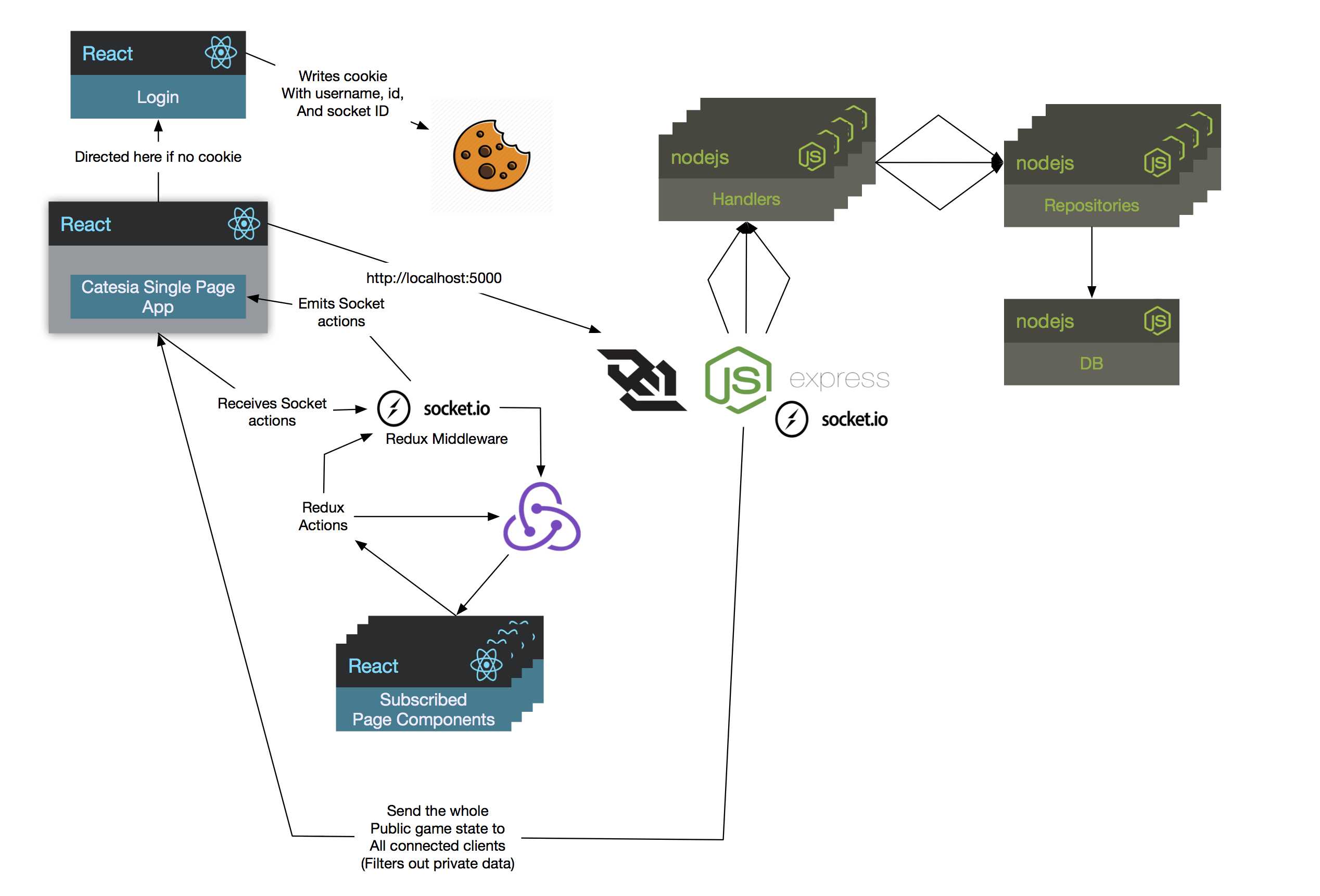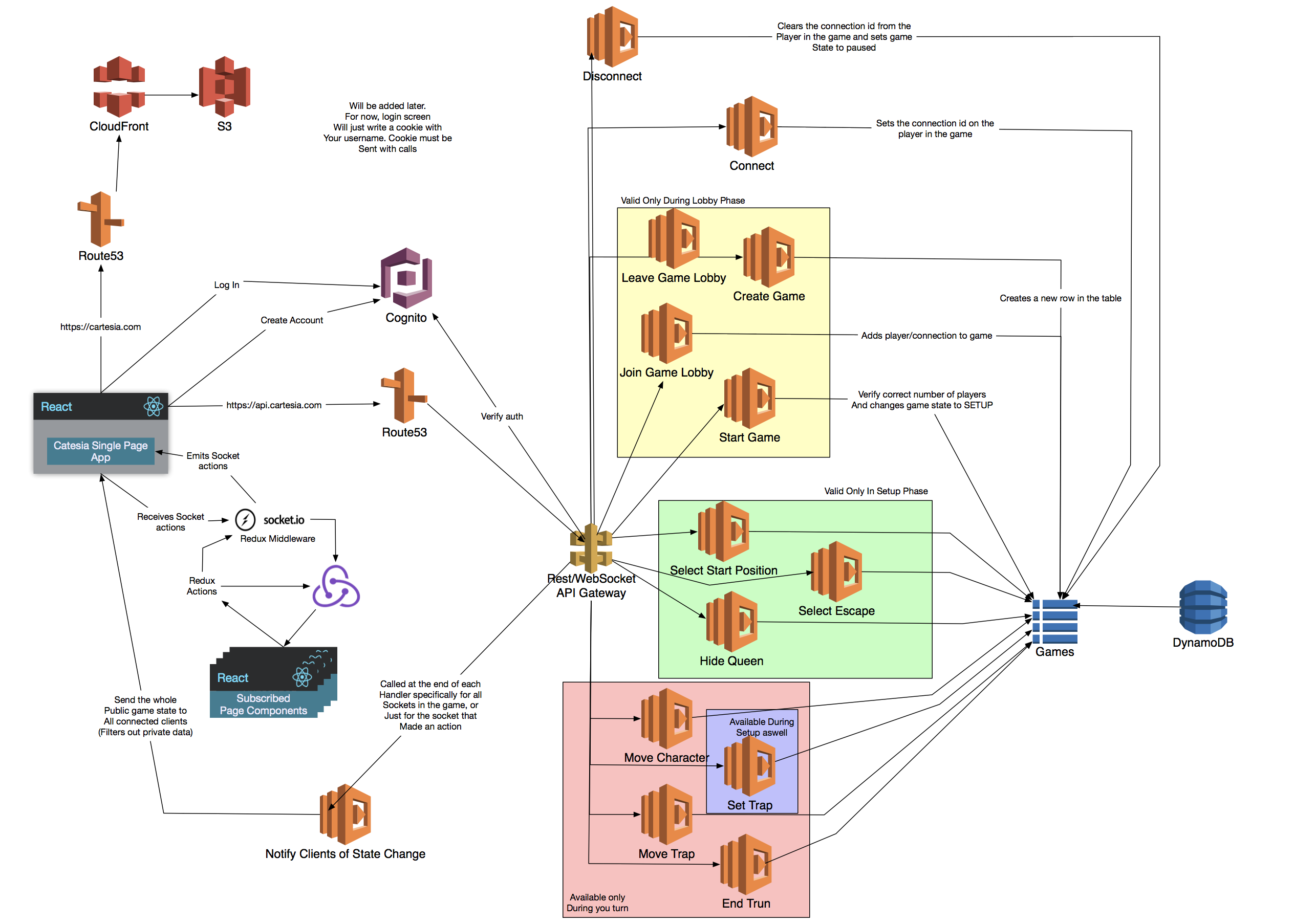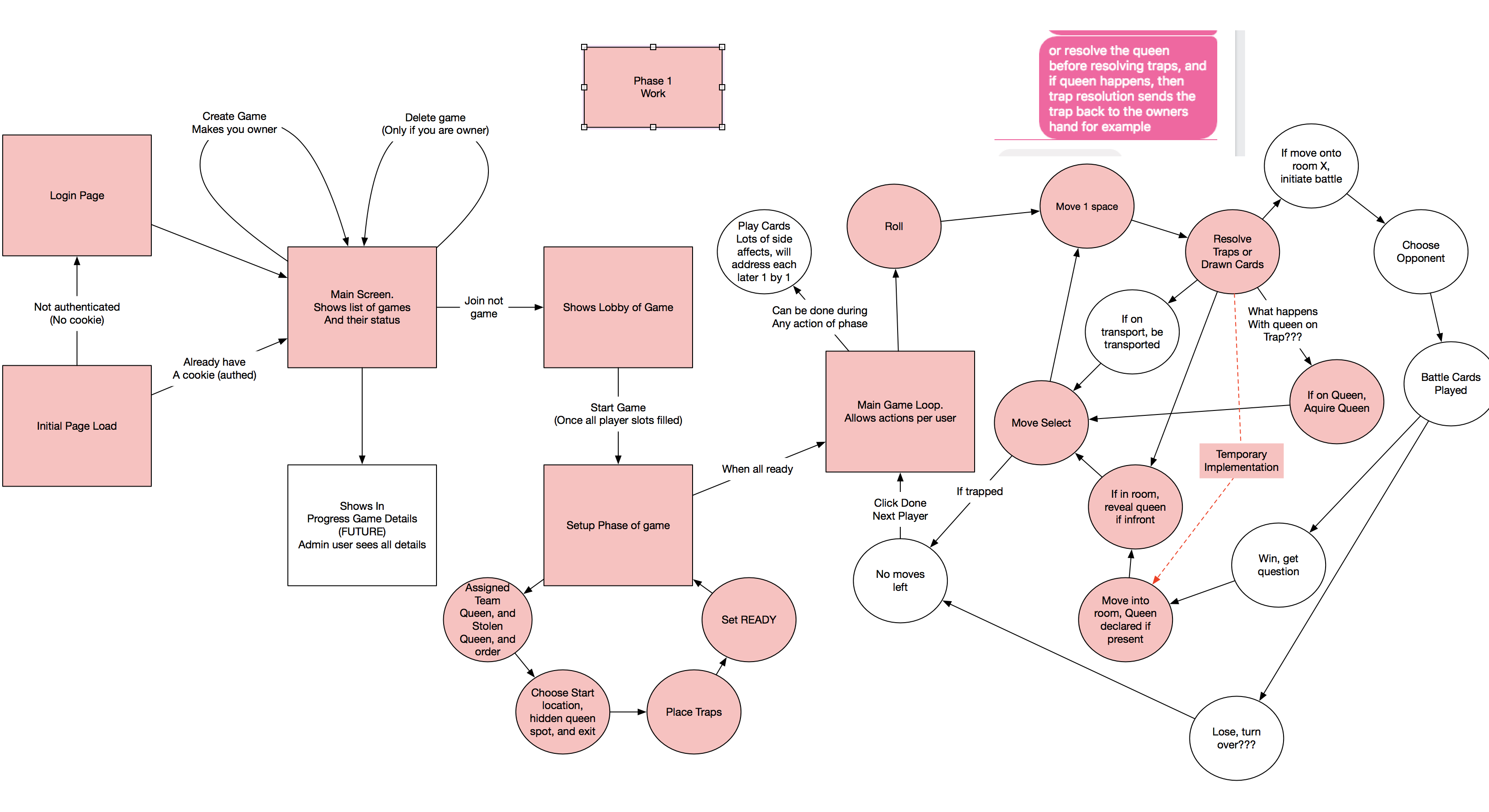A board game my fiance made. The pain points of playing with a board is that you have to hide traps and queens on spots on the board. Because this is manual, you have to write down their hidden locations and then pay close attention to the game to verify if people walk over your traps.
The initial goal of this project is to handle that via a web app. The long term goal is to make this the entire game.
The code is mostly split into 2 directories, client and server. The client has its own whole node ecosystem (package.json, Dotfiles, etc) whereas the ones for the server are at the root level. All needed yarn commands are able to be hit by the root level package.json
- Nvm - https://github.com/creationix/nvm#install-script
- Node@10.15.1 - run
nvm use - yarn -
npm install -g yarn
yarn setup- yarn installs the server and client.yard start- uses concurrently to run the node server and create react app frontend on separate ports.
yarn client- Starts just the client.yarn server- Starts just the server.yarn lint- Runs eslint across both the client and server.yarn lint:client- Runs eslint on just the client code.yarn lint:server- Runs eslint on just the server code.
yarn lint:fix- Runs eslint fix across both the client and server.yarn lint:fix:client- Runs eslint fix on just the client code.yarn lint:fix:server- Runs eslint fix on just the server code.
yarn test- Runs jest tests across both he client and server.yarn test:client- Runs jest tests across just the client code.yarn test:server- Runs jest tests across just the server code.yarn test:server:watch- Starts the jest watch tool over server test suite.
TODO
TODO
The application is split into 2 separate pieces. A react frontend made with create-react-app, and a nodeJS backend exposing a rest interface and a socket.io server.
The full frontend of the app is a client side static site using react. It is meant to be built into static files and served via a CDN.
Authentication right now is simple and handled via a single form that upon submission writes a cookie. The presence of this cookie is used to send the user to the login page when hitting an authenticated page without a cookie. Later on this cookie data will be sent with the requests to identify the user making the request. This isn't very secure as I could change my cookie to be that of someone elses. Long term, this will instead integrate with Auth0 or AWS Cognito.
All possible state should be placed in the global redux store. Redux should automatically handle not re-rendering the whole view when non-important state changes happen (for example, placing a trap may not have a visual representation on the board, so we won't need to re-render it).
Backend interactions can be broken into 2 categories, Rest HTTP calls (1 way), and Socket events (2 ways). Rest HTTP calls should be made when validation against the attempt should be done that may result in error handling (attempt to move forward a spot, get the result of if it was successful or not). Sockets should be used for fire and forget events. NOTE: I'm not married to this, I was just thinking about this a bit ahead of time. In reality, all of our calls probably need backend validation.
It just seems that handling a rest call
a container calls a redux action, caught by a saga, calls the backend api, gets a response + status code, fires a new redux action to put the data into the redux store
vs handling a socket
container calls a redux action that is caught by a socket.io redux middleware. we emit an event to the backend, but then somewhere else in our middleware we will have to listen for the response event
The socket has a more disjunct response handling. We may result in using sockets for all communication, or most calls to the backend are rest calls, and we just get socket pushes for state changes.
Rest HTTP calls will be done via Redux Saga's as a middleware.
Socket message emitting and recieving are handled via the socket.io.js middleware.
Eventually, 1 or 2 service client objects should be made to handle the backend communication to have a central place to enhance with things like auth, logging, error handling, and retries.
The UI code should be split into 3 main sections.
- Components - Pure react components with no state or side affect code. These specifically should be small, maybe reusable UI components. Could be hosted by react storybook and worked on in isolation from redux and react-router.
- Pages - Pure react components with no state or side affect code. These specifically should be a set of components pulled together to make a single unified view for 1 route. Could be hosted by react storybook and worked on in isolation from redux and react-router.
- Containers - Following the redux container/component pattern, these are our glue components that hook up pages to our redux state and dispatch store
The server side code right now is a simple nodeJS express server hosting a rest HTTP api and a socket.io server. It should be built in a modular way with the end goal of converting it to an AWS serverless system. The current system is for quick early iteration so we don't deal with AWS complexities before even having something working to show.
The current DB implementation is a simple in memory json store. The repository modules should be the only thing interacting with it directly in order minimize fallout if we switch to use a real DB or other persistent storage.
These are simple classes for us to deserialize our db models into. They are not meant to be an ORM type interface to the DB. Rather, we create an object out of the data, and it can provide calculations or specific views of the data. They should be read only ideally to get this affect.
These modules are our interface to our DB. They should provide all the read and write interactions. When possible, they should deal with our models and not raw JSON directly unless persisting/reading from the DB.
There should pretty much be a 1-1 mapping of handlers to Rest/WebSocket interactions. These handlers should receive the data we get from our api calls and sockets, and if needed, should return the data required that would need to be emitted to Sockets, and the data needed to determine which sockets to emit to (like the players currently in a game). If we move to a serverless setup, each handler would become a separate lambda function. Because of this, these handlers should have no dependency on Socket.io directly.
These files are our outermost module that glues our business logic code to the current implementation of express and socket.io. If we move to a serverless module, this would be broken into glue code for each handler to the AWS API Gateway Lambda event.
The following diagrams are made with omnigaffle (source files included) and screenshotted for others to view. They are a work in progress and details can be added as needed.
The current implemntation has a backend of a simple nodeJS express server with socket.io. It uses an in memory DB.
It would be cool at a later date to deploy this with serverless technologies. Because of that, the backend is being architected in a modular way that could be decomposed into this
This is a work in progress, but it should be a flow chart of the state a user goes through as playing the game.
- teams
- Stolen Queen (PRIVATE TO YOU)
- Team Queen
- Players
- Connection ID (PRIVATE TO YOU)
- Cards (PRIVATE TO YOU)
- Name
- Trapped Status
- Has queen
- Placed traps (PRIVATE TO YOU)
- Hidden queen locations (PRIVATE TO YOU)
- Player locations
- Game State (state machine status)
- Battling Cards (cards in your suite minus your queen) (PRIVATE FROM EVERYONE)
- Game Owner
- All Queens Hidden?
- All Players Positioned?
- Carry count (has queen)
- Sign in
- Create Game
- Join Game
- Start Game
- Hide Queen
- Select Starting Position
- Move Character
- Set Trap
- Move Trap
- Turn Done
- Pick exit
- Random small todo statements strewn about the app
- TODO: Add more TODO's


